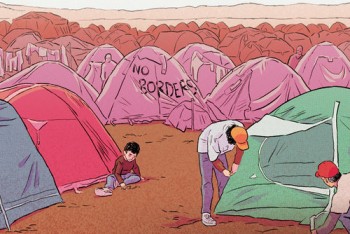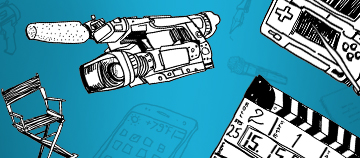
Florent Maurin, CEO at The Pixel Hunt and creator of Bury me, my Love discusses the inspiration and process behind the game.
What sparked the idea for Bury me, my Love and how did it change over time?
It all started with an article in French newspaper Lemonde.fr. The piece was about Dana, a young Syrian woman who decided to flee from Damascus in late 2015 and try to reach Germany, where a part of her family already was. During her journey, she had kept in touch with her mother and her loved ones via a messaging application (WhatsApp), and the article was based on actual screenshots of the conversations she had with them. To a French reader such as Florent Maurin, it felt both very familiar (the relaxed language, the emojis, the mundane questions about Arsenal's results...) and completely alien (the matters of life and death discussed). That's when Florent thought this setting would be a very interesting basis for a video game. Florent thus contacted Lucie Soullier, the reporter at Le Monde, and, through her, Dana, the Syrian woman. They both accepted to join the project as editorial advisors, and during the entire production process, their constat feedback has led to a lot of adjustments and rewritings. If Bury me, my Love feels realistic and believable, it's mailny thanks to them.
Who is the game targeted at?
History has often shown that everyone may become a migrant – and that it may happen faster than you’d imagine. Yet a lot of people, particularly in Europe and Northern America, tend to forget that. Far-right rhetoric is spreading, and hostility towards foreingers is on the rise. This has a lot of reasons, and among them is a trend to overfocus on what makes us different – and overlook what we’ve got in common as human beings of the XXIst century. So our target audience is anyone who’s in a privileged situation and might sometimes forget how lucky they are.
Why did you feel it was important to make a game like this?
We started working on Bury me, my Love because we were moved by the hundreds of stories of migrants and refugees we read. But we are not activists, neither do we have a political agenda. Our goal isn't to brainwash people into thinking every migrant is the nicest person they'll ever meet. We simply realized that, more often than not, we tend to consider the issue in terms of figures and completely forget that behind every migrant, there are friends, families, people who care and worry for them. Bury me, my Love is a simple reminder of this simple fact.
What research or collaborations did you undertake to inform the game?
The main collaboration, as aforementioned, was with Dana and Lucie, but we spent more than 4 months in documentation before even writing a single line of the game. We read a lot of articles, watched a lot of documentaries, interviewed with several migrants and NGO representatives. For instance, we "visited" the migrants orientation centre in the La Chapelle district in Paris, together with a member of Utopia 56, the NGO that runs the place. We were also in touch with associations that take care of those people when they stop being migrants and settle somewhere, such as the centre for psychological assistance that helps them dealing with the traumas they met on their way.
Is there anything else you think people would find interesting about the game?
It's interesting to know that Bury me, my Love's script is 110000 words long - as big as a middle sized novel. And as it's translated in 5 languages, that amounts for a lot of text! It also has 19 different endings, all coming with a specific audio message from Nour. When we recorded the French version of those messages with actress Baya Rehaz, it was Baya's last job before she went on maternity leave. The strength of some of the endings, together with her condition, made for a very, very intense recording session.





